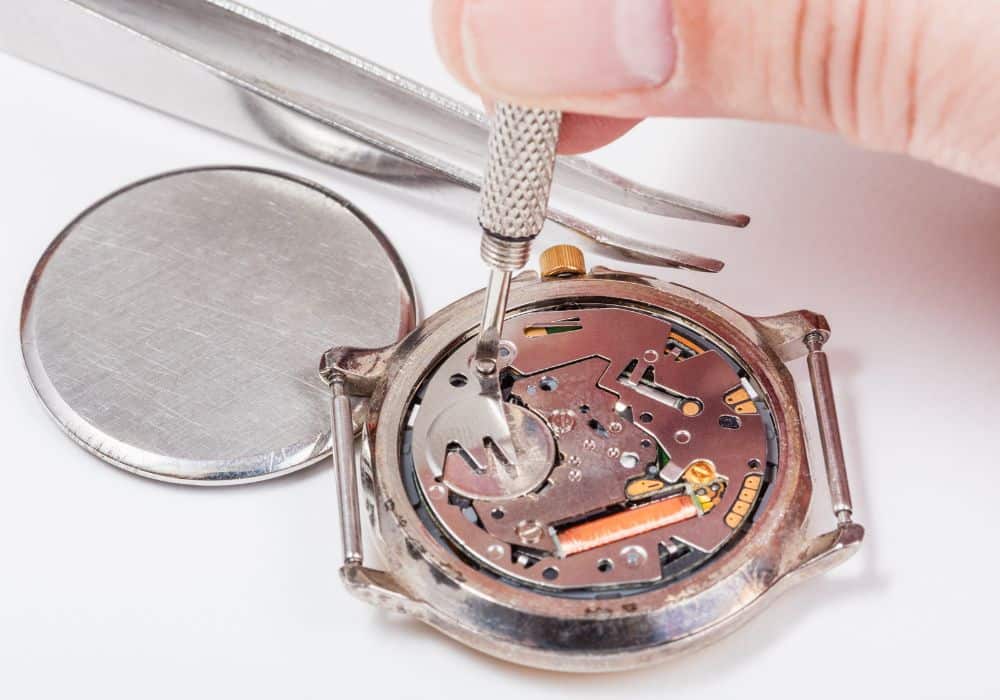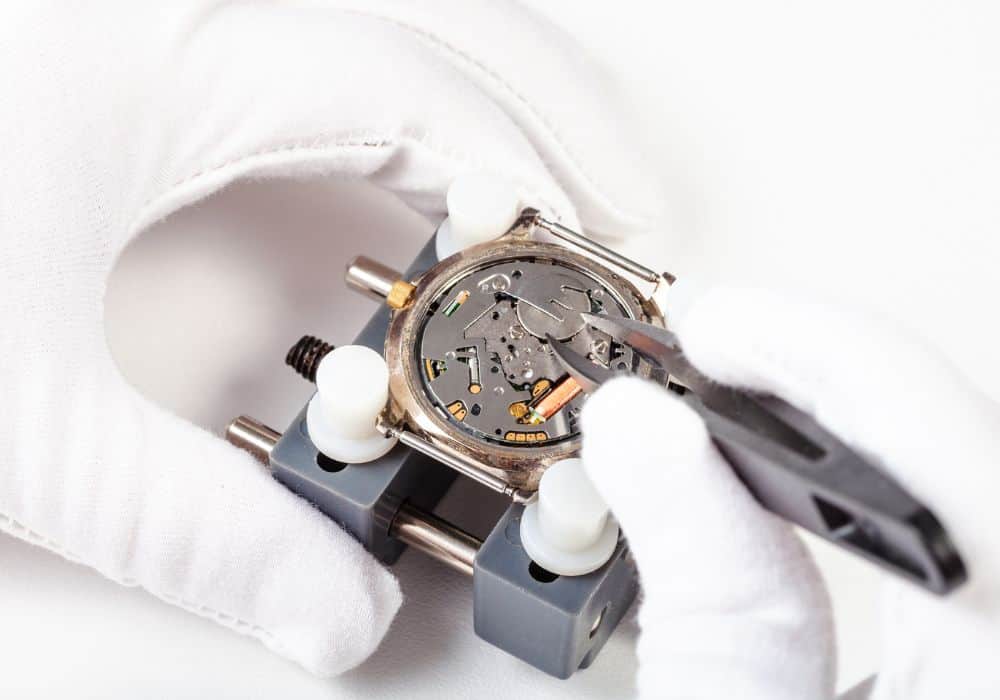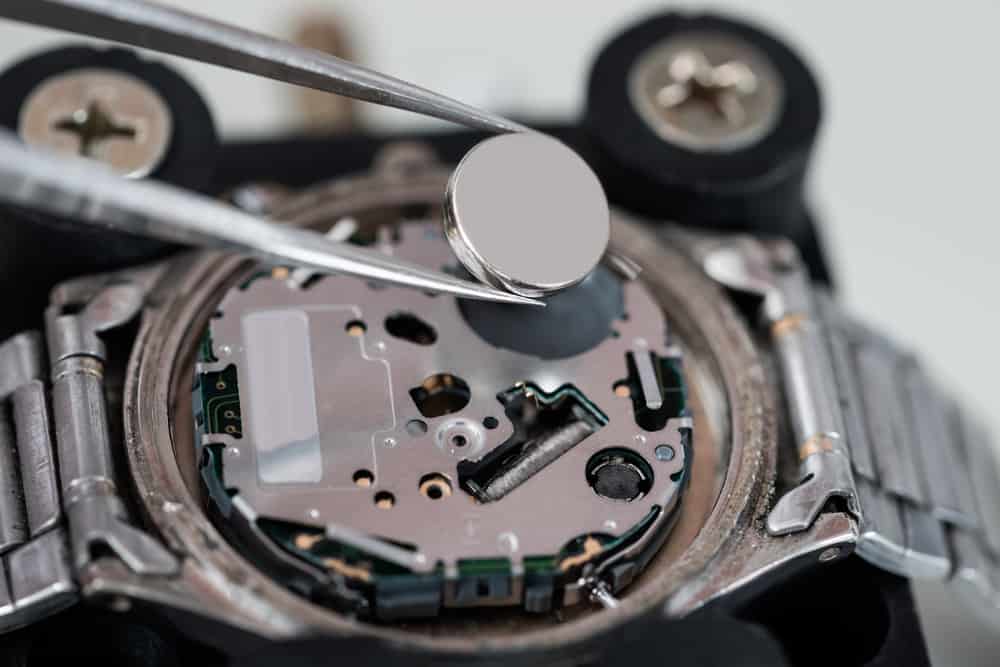The wristwatch is a common accessory for everyone regardless of age and profession. At some point, you may have wondered what size of battery your watch uses.
The truth is that, with batteries, there are no one size fits. And we’d explain that shortly.
Finding the exact type or size of your watch battery can be confusing especially when you have zero ideas about what to look for.
Some people might say they do not need to know the size battery of their watch, after all, they can always go to a local jeweler to get a watch battery replacement.
But what happens when you are in a place that has no access to local jewelers, and you need to replace your battery yourself? Do you go around with a dead watch? No, that’s no fun, and can be embarrassing.
In this article, we’ll discuss everything on what you should know about the different sizes of batteries for a watch, and how to know the right model for your watch.
Table of Contents
Do All Watches Use the Same Battery Size?
First, all watches don’t use the same size of batteries, and neither do they use the same type. There are basically two types of watch batteries; 1.55-volts silver oxide coin cell batteries and 3.0-volts lithium batteries. There are over 100 different types of these batteries in use, and they are a better alternative to alkaline batteries, which don’t last too long.
Some high-end batteries use rechargeable coin lithium cell batteries making them more durable than normal wristwatches.
Typically, when it comes to watching battery sizes, the most common ones you’d find are batteries that are 9.5 mm in diameter and 2.1 mm in height, and 6.8 mm in diameter and 2.6 mm in height, both termed code 371 and 377 respectively.

How To Know Your Watch’s Battery Size
Not everyone wants to take their wristwatch to a local jeweler for battery replacement, and that’s fine. However, if you are using an expensive timepiece, it’s best for a professional to change the battery for you.
Moving on, the easiest way to know your battery size is by opening the watch and looking at the battery code engraved on it. but if your watch is still under warranty, don’t attempt to open it up, or you’ll render the warranty useless.
For wristwatches that come with a manual, you’ll most likely find this information written there.
The next step is to use a battery conversion chart to know the battery codes compatible with your watch. Now, another dicey part is choosing the type of battery for your watch.
Keep in mind that you aren’t just putting into consideration the size of the battery, as some button batteries come in the same size but cannot be used interchangeably.
To replace your watch battery, it has to be the recommended battery type as well. For instance, you cannot use an alkaline battery for a watch that requires only lithium batteries because you’ll end up damaging it. Imagine supplying unstable heavy current to a watch that needs only stable voltage. You’ll most likely damage your watch in no time.
Different Watch Battery Types
Recall that we mentioned not all watches use the same type of battery; depending on your type of watch, you’ll need a unique battery. Let’s give you a detailed rundown on the different battery types, so you won’t have any issues buying the right one.
1. Lithium Batteries
Lithium button cell batteries are very common, but also the most expensive, literally. However, you are getting real value for your money, because it’s long-lasting (10 years) and you won’t need to replace your watch battery frequently. They are lightweight and do not add any extra weight to your watch, not to mention they work in a broader range of temperatures than other batteries.
2. Silver- Oxide Batteries

This is also very common, and maybe more preferred by users because it’s affordable and long-lasting as well. Many manufacturers make use of this battery for their watches, and that’s because they can maintain a stable voltage when in use. It’s for this reason it’s used in digital cameras and metering equipment. On average, if properly maintained, silver oxide batteries have a shelf life of more than 10 years.
3. Mercury-Oxide Batteries
Mercury batteries shouldn’t make the list because they emit harmful mercury content, hence they are banned in most countries. However, our aim is to educate you on all battery types. Just like silver-oxide batteries, mercury batteries give a stable current and that’s why it’s sometimes used for applications that need a stable voltage.
4. Alkaline Batteries
Due to their cheap price, people usually go for alkaline batteries. They are good for delivering high currents, but not stable voltage, and also, they don’t last as long as silver oxide and lithium batteries. The average lifespan of alkaline batteries is 3-5 years depending on the manufacturer.
5. Zinc-Air Batteries
Just like the name implies, they make use of air as a depolarizer, and unfortunately, they don’t last for long. But if you need a battery that has high capacity regardless of the lifespan, then zinc-air battery is perfect. In less than a few weeks, they are permanently dried out.
What to Know When Replacing Your Watch Battery
To replace your watch battery, you must have figured out the right size and type; but if you are unsure how to replace it, take it to a watch repair shop so you don’t permanently damage it.
When choosing your battery type, if you notice the original battery is a silver-oxide battery, but the manufacturer specifies that you can use a lithium coin cell battery as well, go for the lithium battery as it has a longer shelf life.

Also, if the battery gets damaged within the warranty period, there’s no point in fixing it; take it back to the manufacturer’s shop for a replacement. But if it has exceeded that period, then you can fix it.
After you have found the right battery type and size, go through the written instructions written by the manufacturer; detailed instruction is usually given or you can watch YouTube videos.
The truth is, some watches cannot be fixed in the comfort of your home, because you’ll need certain tools unless, of course, you are willing to purchase them. And also, some wristwatches need their seals replaced when the battery is being changed, so be sure to know that before proceeding. So, if you are uncertain, go to a professional, because it’d be bad to lose your beautiful watch over an avoidable mistake.
Some people have made it a practice to change their watch batteries every two years, and while that’s a good idea, it’s somewhat wasteful. Why get rid of a battery that might still serve you for an extra year or even two?
Although, leaving a damaged battery inside your wristwatch can cause the battery to leak, and damage the watch itself.
Use these simple steps to replace your watch battery yourself;
First, you’ll need, a replacement batter, a small screwdriver or tweezers, gloves, and a knife to open the watch, or you could buy a standard watch case opener.
- Open the watch case
- Spot and identify the battery
- Take out the old battery and install the new watch battery correctly (use a plastic tweezer if it’s hard to remove)
- Close the watch case, but before you do that, make sure the watch is working properly
Voila! That’s all; set your watch to the correct time and you are good to go.

How To Know When to Replace Your Watch Battery
When your watch stops working, it’s a clear indication that the battery has gotten to the end of its shelf life and needs replacing. However, not all wristwatches abruptly stop when the battery is in the process of draining.
Other signs you need to look out for include;
- When the “second hand” of your watch jumps more than one second at a go, it’s a sign that the battery is draining. And in cases like this, the battery will be completely drained in less than two weeks.
- If your watch always goes back to the wrong time, even after you set it rightly countless times, then the battery is already getting damaged. Also, it means that the battery is stopping and starting, hence the wrong time.
- Once the alarm on your watch isn’t functioning anywhere, it’s most likely a battery problem and needs to be replaced as soon as possible.
- If you notice condensation in the face of your watch, a draining battery is definitely behind. However, you can fix this by making sure the back of the watch is warm as this will force the moisture out. But, still, take it to a professional repair shop when you can.
Conclusion
Watch batteries have different sizes, types, and chemistry. What you think might be the right battery size for your watch may in fact be a perfect size but the wrong type and hence, damage your watch.
There are a lot of battery sellers out there parading to have the best batteries, only for you to purchase knockoff batteries, and that’s why it’s important to buy from only authorized sellers.
